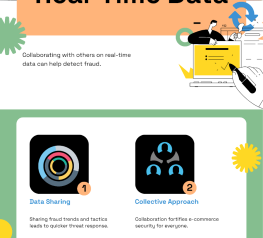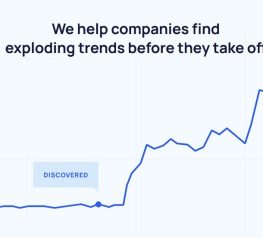How To Market Essential Oils
Have you ever asked yourself, How do I connect with my customers? Or perhaps you’ve asked, How do I get them to make a purchase? As an online entrepreneur, you’re definitely not alone in asking yourself these timeless questions. That’s part of the retail game! It’s like a riddle that’s not always easy to solve. Luckily, if your store specializes in aromatherapy, then we have some useful tips for marketing essential oils.
As part of the “natural and organic” craze, essential oils are hot commodities. If you want to carry them in your online store, you’ll have to find a supplier or wholesaler that offers these essential oils. There are multiple ways these oils can be used, which makes them a versatile product for both commercial and personal needs. The trick is connecting with the customer and educating them on how these essential oils will benefit them. Not only do these products have different uses, but there are different ways to market them. So, without any further delay, let’s dive right into this useful guide.
1) Do Market Research and Identify Trends

One of the consistent challenges in retail is finding out people want. If you know what they want, then you can effectively market your products and meet demand. Additionally, you can identify trends and capitalize on them. One of the best tools for doing this is Google Trends, which shows you search interest in a given term over a period of time.
For example, general interest in essential oils has been growing over time:
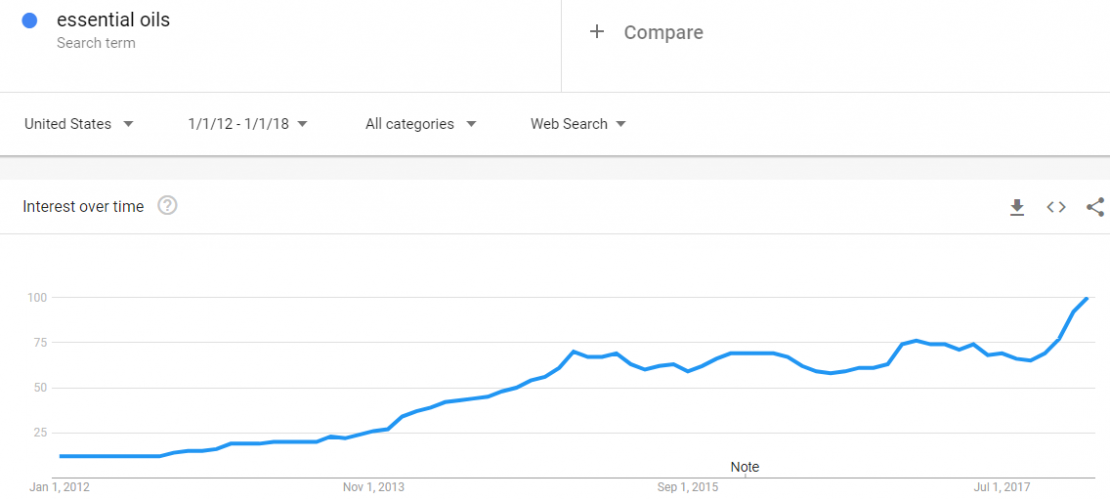
We can see a very clear upward trend. However, let’s use Google Trends again to refine those results. Aromatherapy is the practice of using essential oils for various wellness benefits, so let’s take a look at the search interest for aromatherapy for the past 5 years:
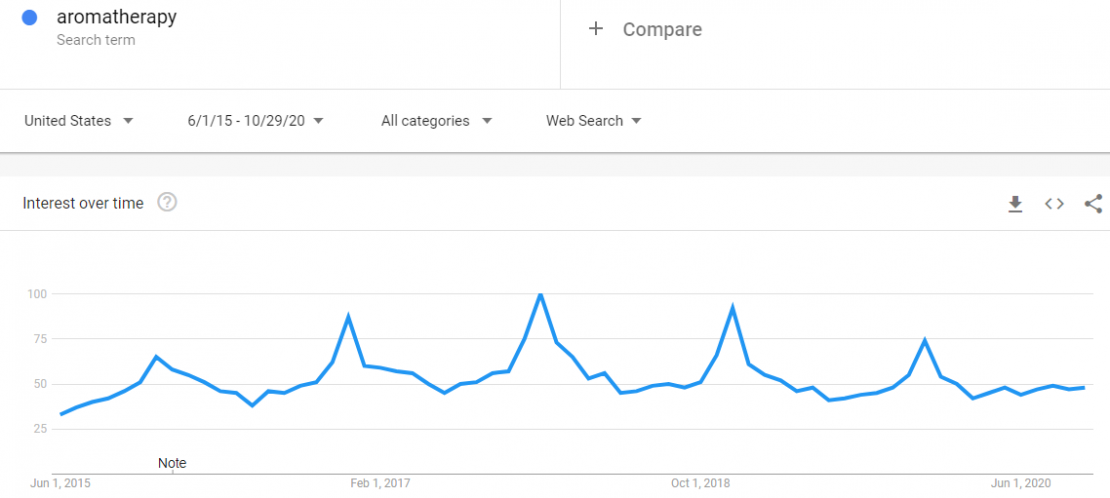
Now we see an interesting trend develop: every year, like clockwork, the search interest in aromatherapy increases spikes right around the holidays. This is because people are buying aromatherapy products as gifts as well as using these products themselves for their own happiness and wellness.
The holidays are stressful! And aromatherapy is most frequently used to alleviate stress. This means that we’ve identified a potential angle for marketing essential oils during the holidays: you can emphasize the wellness benefits of these products to your customers, both for themselves and anyone they’re buying gifts for.
You can also look for other trends within the wider essential oils category with other tools like:
- PSFK – This organization issues regular market research reports to help retailers capitalize on emerging trends.
- Trend Watching – This periodical is used by over 100,000 professionals in over 180 countries to keep track of retail trends.
- Trend Hunter – As the world’s largest and most powerful trend platform, this organization uses over 260,000 trend “hunters” to keep retailers informed.
- Jungle Scout – This is a powerful suite of tools specially designed for Amazon retailers, including market research, trending niches, and hot products.
2) Start a Blog on Essential Oils

This is a powerful tool that you can use to effectively market essential oils and engage customers. The blog’s primary purpose is to educate consumers about the products, so you need to take the time to make your blog posts readable, accurate, and substantial. This will pay off since your expertise will make your blog authoritative for consumers.
Using a blog to market products is also known as inbound marketing. Once you get the reader’s attention by giving them useful information, you can try to convert them into a paying customer by linking back to your store.
That being said, blog posts should never be too complex or filled with technical information. Imagine that your target audience has a reading ability roughly equivalent to 8th or 9th grade.
To make your blog posts rank high in search engine results, you’ll have to use search engine optimization (SEO), including keyword research. This involves identifying popular keywords and keyphrases that online shoppers type into the search engine.
Once you’ve identified them, you’ll need to create content that’s rich in these keywords. There are multiple tools for keyword research, including:
When you use these tools, make sure that your blog post targets the primary keyword or keyphrase. For instance, if you want to rank for “benefits of essential oils”, make sure to include the keyphrase in the blog post headlines, headings, copy, and meta tags.
However, don’t make the posts too “spammy” by keyword stuffing. This is the practice of jamming these keywords everywhere in the text, resulting in content that doesn’t read properly. The search engine will notice this and dock your rankings.
Examples of posts could be things like “Best Recipes with Lavender Essential Oil”, “10 Reasons We Love Essential Oils”, and “Best Essential Oils for Relaxation”. Finally, don’t forget to incorporate what you learned from the Google Trends research above.
For instance, with the holidays coming up, you could do a series of blog posts on aromatherapy with titles like “What Is Aromatherapy?” and “Top Aromatherapy Benefits for the Holidays”.
3) Educate Users on Aromatherapy
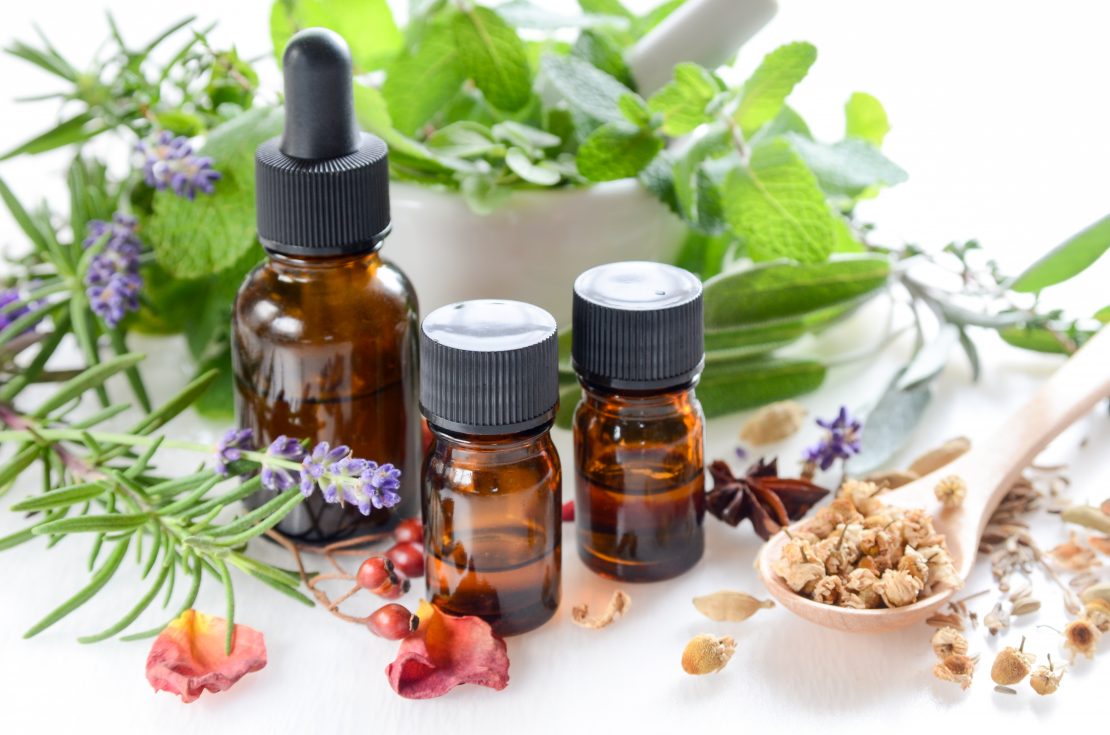
Effectively marketing essential oils means that you have to be an authority on the subject by educating users. Remember, the whole point of starting a blog is to make it an authoritative source for online shoppers and potential customers. Consumers will connect with your marketing efforts only if they feel like you know a lot about the subject.
This means you’ll have to learn about the products you’re selling. Essential oils and aromatherapy include a lot of information. Luckily, there are sites like AromaWeb and Crop Watch as well as multiple publications to help you learn:
- NAHA Aromatherapy Journal
- Aromatherapy Today Journal
- InEssence Journal
- The American Herb Association Newsletter
- Vita Danzare Aromatherapy Journal
You could also get a quick online aromatherapy certification that’s certified by the National Association of Holistic Aromatherapists (NAHA).
Not everyone who gets this certification goes on to become an aromatherapist – previous graduates have gone on to become business owners, product developers, manufacturing specialists, consultants, and even bloggers.
In fact, getting this kind of certification could help your blog tremendously. SEO best practices include having author bios that show your expertise, training, education, and experience in the subject you’re writing about.
With an aromatherapy certification that’s NAHA-certified, it will make your blog appear more authoritative and boost your search engine rankings.
4) Avoid Medical Claims in Your Blog

If you’re marketing essential oils using your blog, then of course it’s important to make your blog informative, accurate, and authoritative. However, your rankings could be docked if you make explicit medical claims unless you have a trained expert writing the blog posts.
In SEO best practices, this is known as authority – the search engine wants to make sure that you have the authority to make certain claims, especially when it comes to health.
That being said, the search engine algorithm has cracked down on unsubstantiated claims in recent years, so you have to tread lightly. If you don’t have a doctor or medical researcher writing or fact-checking the posts, then it’s best to avoid these types of claims.
Instead, stick to these general guidelines:
- Stay away from explicit medical claims and listing specific diseases or conditions.
- Instead of saying medicine, use the word remedy instead.
- Never say that aromatherapy cures a condition or disease.
- Instead of writing help or treat, use the word promotes (“aromatherapy promotes relaxation”).
- Point out consumers’ intentions (“consumers are looking into lavender essential oil for sleep”).
- Try to avoid using the medical terms for symptoms (“essential oils soothe an upset stomach” instead of “essential oils treat nausea“).
These are just some general guidelines, but it’s always best to be extra careful when marketing products that deal with health and wellness.
5) Build Your Email List

Email marketing is a great way to increase customer retention and drive sales. However, you have to strategically acquire email addresses so you can nurture them into paying customers. This is an ongoing process, but it can yield great results in the long run.
That being said, here are some tips for building your email list:
- Add a pop-up asking for the consumer’s email address on the landing page or homepage of your online store.
- When creating this pop-up, make sure it only targets new customers who aren’t already on your email list.
- Offer a discount for signing up on the email list – have a pop-up that says something like “Get 15% off your first order by entering your email!”
- You can also embed a sign-up form in the footer – just make sure that it’s appealing to the customer by saying something like “Learn About Promotional Deals” or “Join Our Growing Community”.
- At the bottom of every blog post, have a call-to-action (CTA) and a sign-up form. You can also send informative blog posts to your email list, especially if you want to capitalize on a market trend. For example, with the holidays coming up, you could send them a blog post about aromatherapy promoting relaxation.
- Include a sign-up form on your social media accounts. For example, Instagram has the Linktree tool to embed multiple links in your bio, allowing you redirect visitors to an email sign-up form.
- During your checkout process, ask the customer if you can send them future emails with deals, promotions, and product information.
It’s important to remember that people are frequently bombarded via email. Much of the time, this contact is unsolicited, so make sure you don’t overdo it.
If the emails feel too “spammy” or are too frequent, they may unsubscribe from the email list. The last thing you want is to annoy the email recipient and potentially lose their business forever.
6) Build Your Social Media Presence

Another powerful tool for marketing essential oils is social media. This has changed the entire online retail game, so make sure you take full advantage of it. You should create store accounts on Facebook, Twitter, LinkedIn, and Pinterest.
You can then keep track of who likes your page and/or posts to then better market to them. Make note of their age, geographic location, and interests as this will help you design more effective marketing campaigns.
Additionally, you can integrate this marketing tool with other tools. For instance, if you have a highly “shareable” blog post that’s informative and interesting, then you should post it to your various social media accounts.
Work with Instagram influencers

You may have heard of influencers. Essentially, these are professional Instagrammers who have a large audience of followers and therefore wield a lot of “influence”. Back in the old days, they may have been called “tastemakers”.
Nowadays, micro-influencers have between 1,000 and 100,000 followers while macro-influencers have over 100,000 followers.
That being said, health and wellness influencers are absolutely enormous on the Instagram platform. In fact, there’s an entire cottage industry that revolves around these influencers, and this is exactly the target audience for your aromatherapy and essential oil marketing efforts.
Furthermore, here are some tips for the Instagram platform:
- Start your Instagram account and post about the aromatherapy/essential oil products that you offer. Make sure you mention any sales or promotional offers and link back to relevant blog posts.
- Now that you have a feed, you can see who follows it. You can use the Instagram Similar To function to expand this network.
- If they don’t have many followers, send them an invitation to your email list to try and convert them into a customer.
- If they have a larger following, ask if they’d be willing to write a guest blog post about a specific product. They could make an Instagram Story or write a testimonial about the product and their post can link to their Instagram profile and vice-versa.
- If you have a Twitter feed, always use hashtags related to your Instagram feed. The Similar To function connects those hashtags with other, related Instagram feeds that may become followers or customers.
Use Pinterest to share recipes or blends

Pinterest can also be useful for aromatherapy or essential oil marketing. Every marketing technique has a goal, including increasing traffic, rankings, or social shares. With Pinterest, the goal is to increase visits to your online store through Pinterest boards. These are the perfect way to share essential oil recipes and blends.
Many people use essential oils to make blends, either for fragrance or as part of aromatherapy. You can find recipes anywhere, including at The Prairie Homestead, Aroma Web, Recipes with Essential Oils, and Now Foods. On your Pinterest account, you can share these recipes or blends.
Additionally, if you’re feeling especially creative or have become certified in aromatherapy, you could even come up with your own. Just make sure you give them a memorable name (“Cool Breeze” or “Tranquil Creek”) and give them a specific purpose (“this blend is for relaxation” or “this blend is for restful sleep”).
Part of marketing is selling a feeling or experience, especially if you’re dealing with essential oils or aromatherapy.
Sharing these recipes/blends is exceptionally easy on Pinterest. In fact, there’s an entire board known as Essential Oil Recipes where you can share these. However, just make sure you follow these basic tips:
- Pin images to Pinterest and include a pinnable image on every blog post you publish. Make sure you create the image to include your branding and store URL. You should also use relevant keywords in the short text and make the copy snappy since some people tweet directly from Pinterest.
- Build links back to your website or blog. You have two opportunities with each pin to add your link: one in the description and one in the source for the pin. You should also add links to your blog and store URL in the image description.
- Embed pins on your blog. Embedding pins on your blog is easy and a great way to get more repins. You can even create an embed code on the Pinterest site. You should also share or tweet your pins on your other social media accounts.
Finally, if you get a “Pinterest for Business” account, you can use it for analytics and see what pins are popular. You can then reshare those pins on other Pinterest boards that are related to essential oils and/or aromatherapy.
These include Essential Oils & Aromatherapy, Aromatherapy, Essential Oils, DIY Essential Oil Recipes & Tips, and Essential Oil Recipes & Ideas. Remember, each board lists the number of followers at the top, so make sure you target the ones with the most followers.
7) Write Engaging Product Descriptions

Effective marketing also requires that you write accurate, engaging, and informative product descriptions. To make it easier for you, we have a blog post that lists the five best product description templates for dropshipping.
Always make sure that the product description is unique, so don’t copy it from another source or online store. This includes your own dropshipping supplier – you can use their product descriptions as a starting point, but you still need to write your own.
Additionally, marketing essential oils or aromatherapy means you need to appeal the reader’s senses and emotions. That being said, use sensory and emotional words to get the shopper’s attention.
These can include what the product feels/smells like (“vibrant, fresh, floral”) or how the product will make them feel (“stimulating, invigorating, soothing”).
A good reference point is thinking about how fancy restaurants describe their dishes on the menu – they’re painting a picture with words. With essential oils, you’re selling the consumer a feeling or experience.
You should also make sure that the product description:
- Creates urgency or need – “don’t let the holidays stress you out with this soothing lavender blend”.
- Provides tangible positive benefits – “get energized and invigorated with our peppermint aromatherapy blend”.
- Reassures and helps – “live your best life with our vibrant essential oil blends”.
However, don’t forget what we discussed above: never make any false or outrageous health claims. Not only will the search engine likely dock your rankings, you may even violate marketing standards. If in doubt, work off what the manufacturer has stated and don’t promise anything more.
8) Use Google or Facebook Ads

If you have the available capital, then using Google or Facebook Ads can really step up your marketing strategy. Some e-commerce retail models do not require a lot of startup capital – for instance, you can start dropshipping with very little money.
That’s why it’s so appealing to online retailers. However, some entrepreneurs find that their online business benefits from ponying up the cash to run a targeting ad campaign. This can definitely get expensive, though.
Google Ads allows you to target certain keywords for pay-per-click (PPC) advertising. Your ad will display on top of search results for the keywords that you targeted such as “buy essential oils online”.
You can also run a bannered campaign with the Display Campaign that markets your store to consumers who are already interested in essential oils. You’ll also have the option of where and how often you want to display your ads, including video, text or images of your essential oil products.
It’s important to note that consumers respond better to video and animated banners than they do just static text. Additionally, Facebook Ads allow you to target consumers based on key information like their age or interests.
For example, you could create a Facebook Ad campaign that targets anyone who “liked” the post of a wellness influencer, yoga instructor, New Age enthusiast, holistic medicine influencer, or meditation guide.
This will take a little digging on your part, but you should consider what types of people would be interested in these products and what other interests they may have. For instance, aromatherapy and essential oils are really popular with people who are interested in “New Age” products.
You should also target users who are interested in Facebook pages dedicated to health and wellness, exercise, yoga, meditation enthusiasts, and natural/holistic medicine. You’ll find lots of crossover between these different groups of users.
Basically, Facebook Ads take the information that people willingly share on social media and then target them with ads designed for their interests. It’s important to note that Facebook Ads also run on Instagram and Messenger, potentially maximizing your reach. Just keep the following in mind:
- Even though they’re more expensive, videos are the most effective.
- With Facebook Custom Audience, you can use your email list to send out targeted ads.
- Make sure you use retargeting methods – Research indicates that visitors are 70% more likely to convert with retargeting ads.
Start Selling Online with GreenDropShip
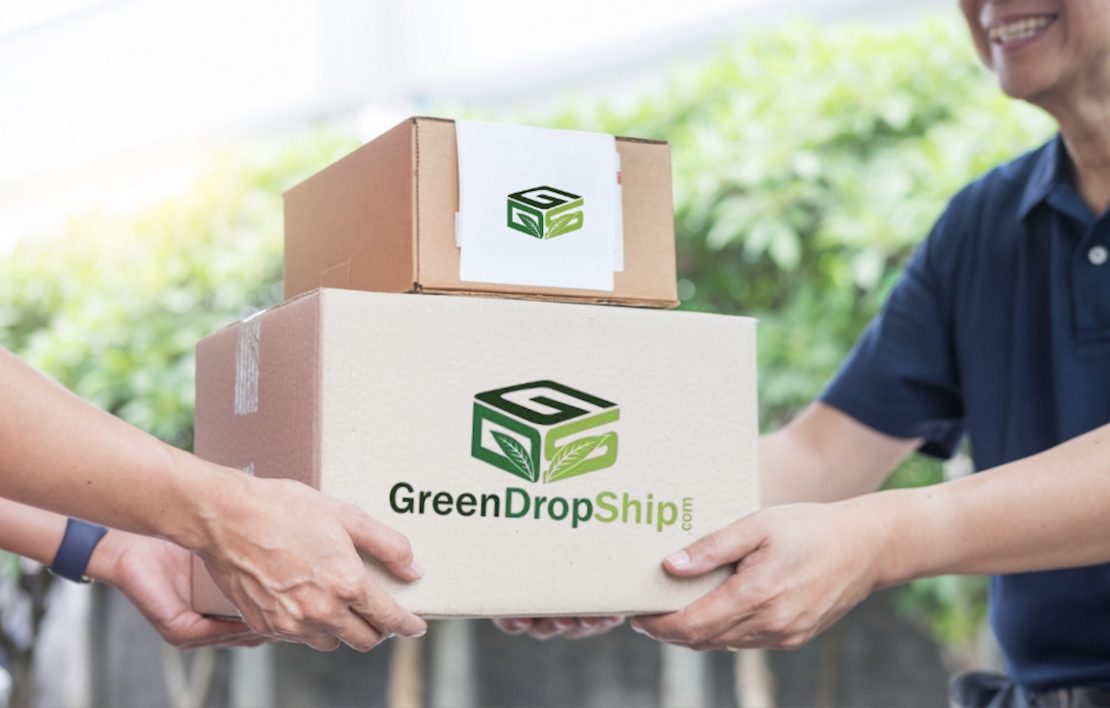
These are the fundamentals of marketing essential oils and aromatherapy products. However, always keep in mind that marketing is an ongoing process – you’ll have to consistently adjust your strategy to stay on top of your game. It’s also not a “one size fits all” solution – some methods may work better than others. If you want to succeed, you’ll need to stay vigilant.
Do continuous market research and stay on top of trends. Consumer tastes will change, so you need to stay one step ahead of the curve and make adjustments when necessary. It also won’t hurt you to look at your competitors every now and again.
If you’re looking to sell essential oils or aromatherapy products, then GreenDropShip is the perfect choice and your ideal supplier. With over 20,000 natural and organic products, we have an extensive inventory of gourmet and premium goods. This means you can easily adjust your product offerings to meet the changing demands of your niche customers.

